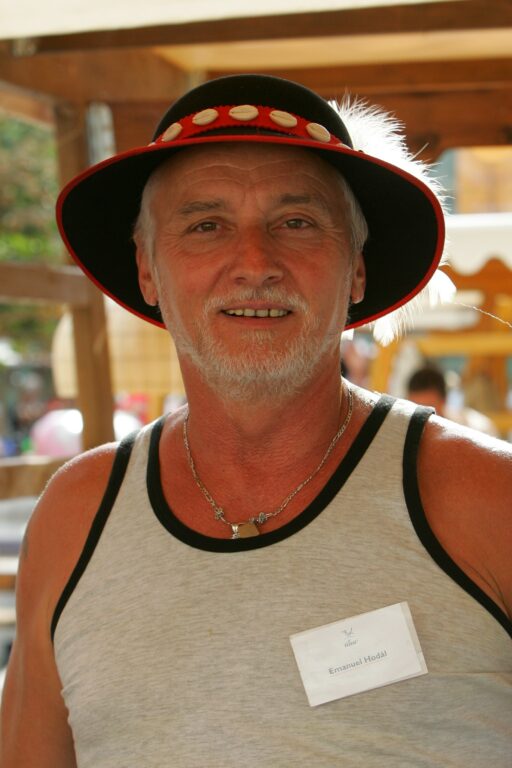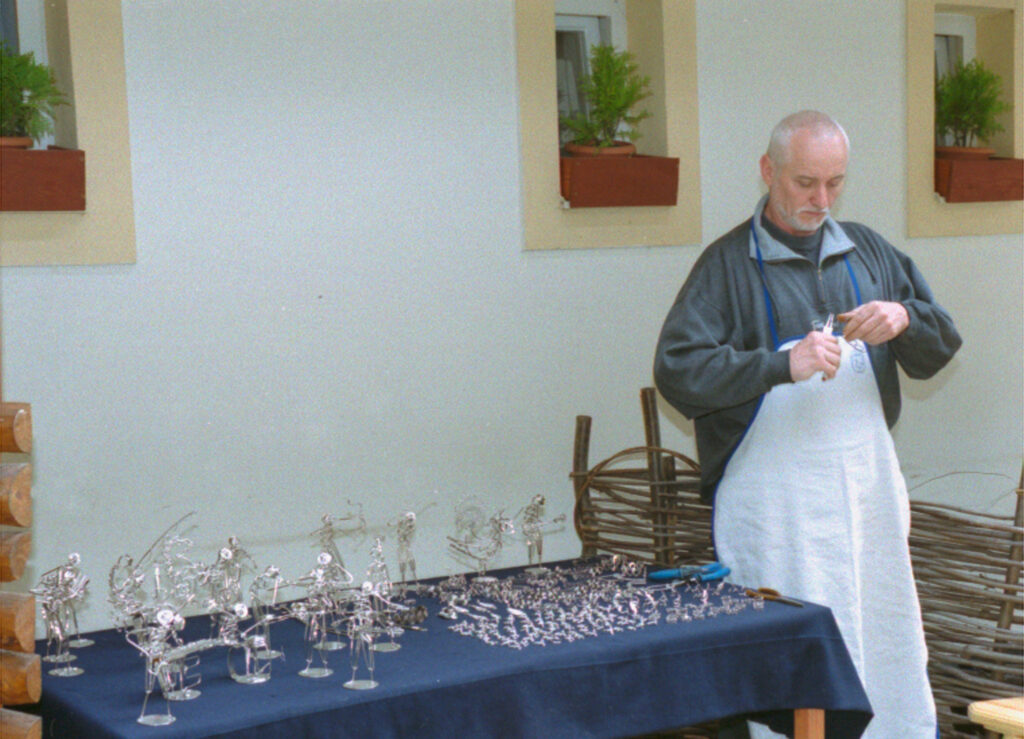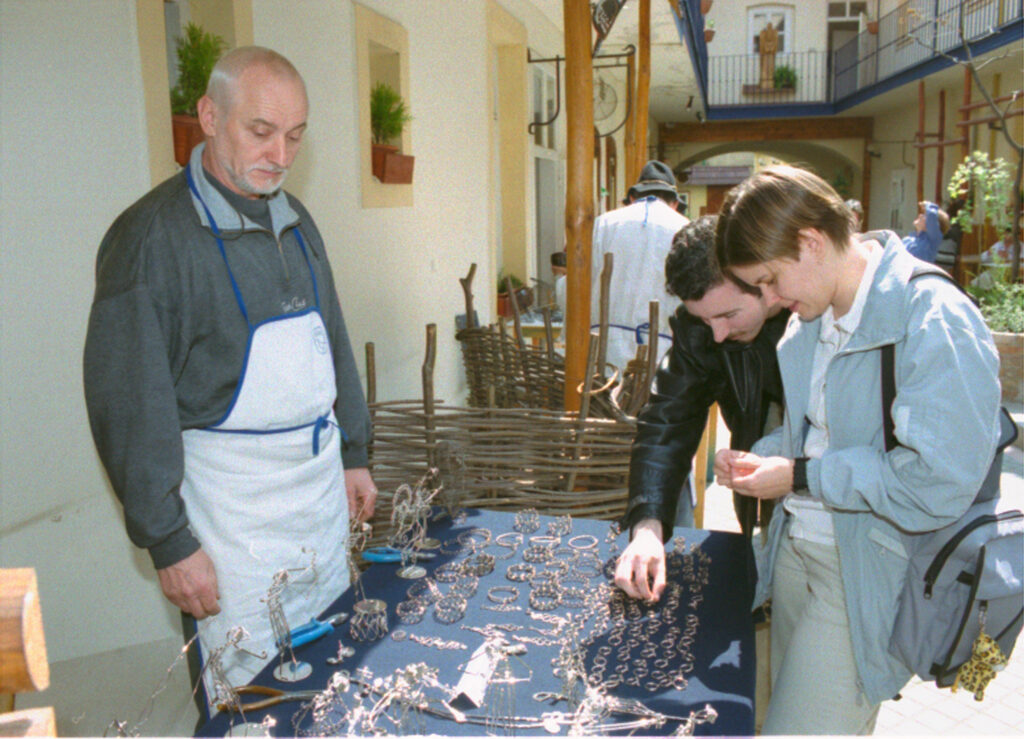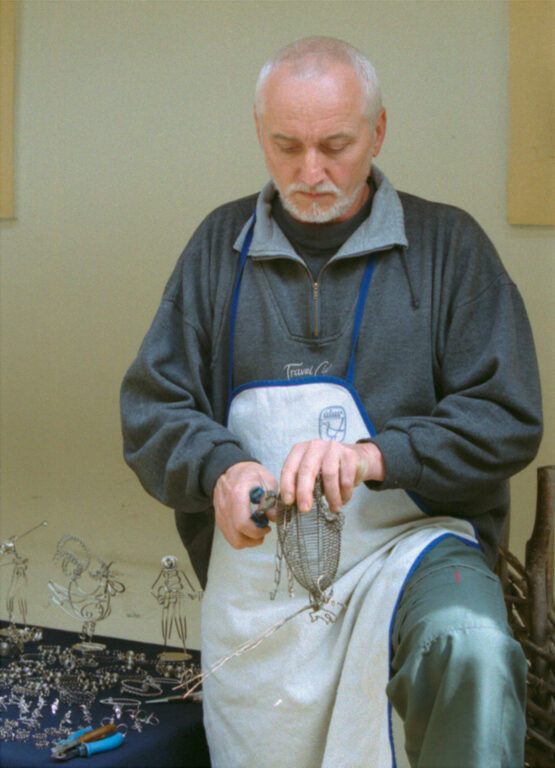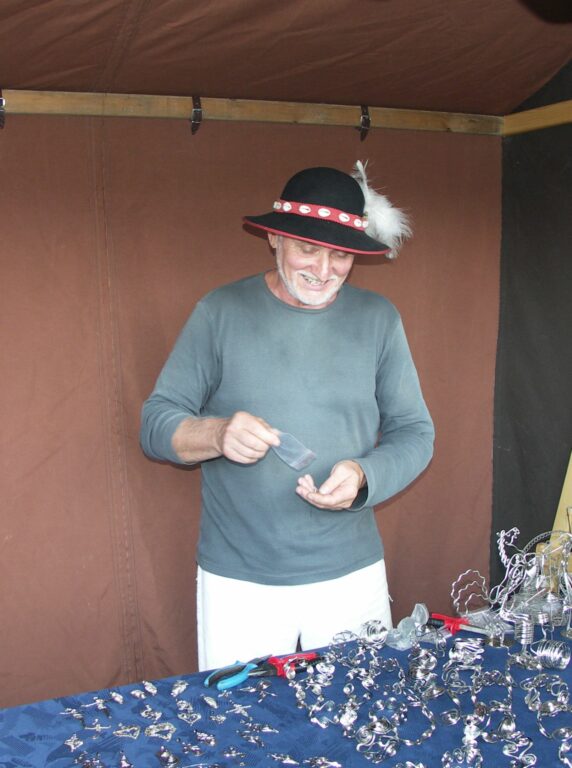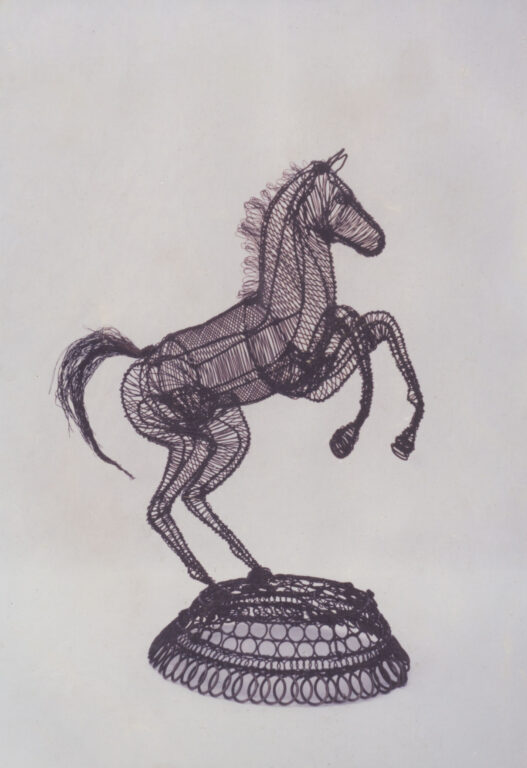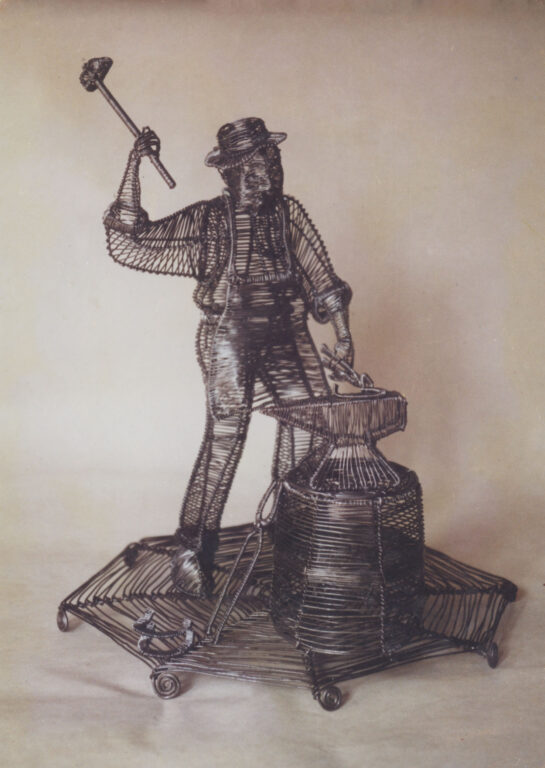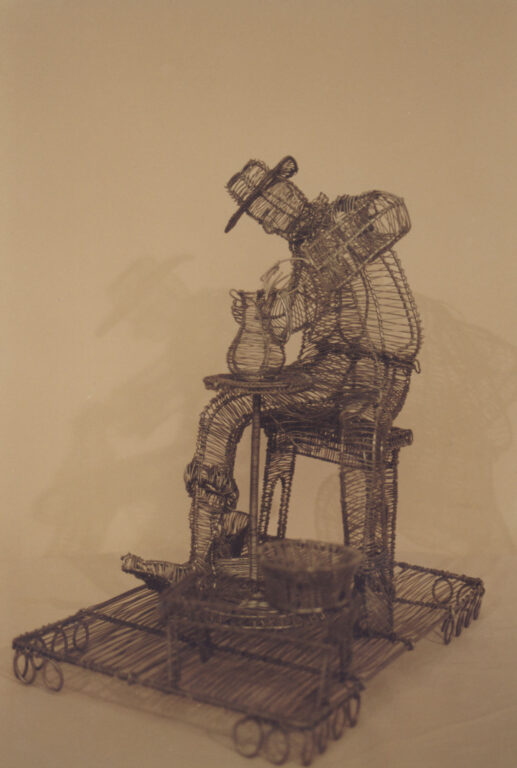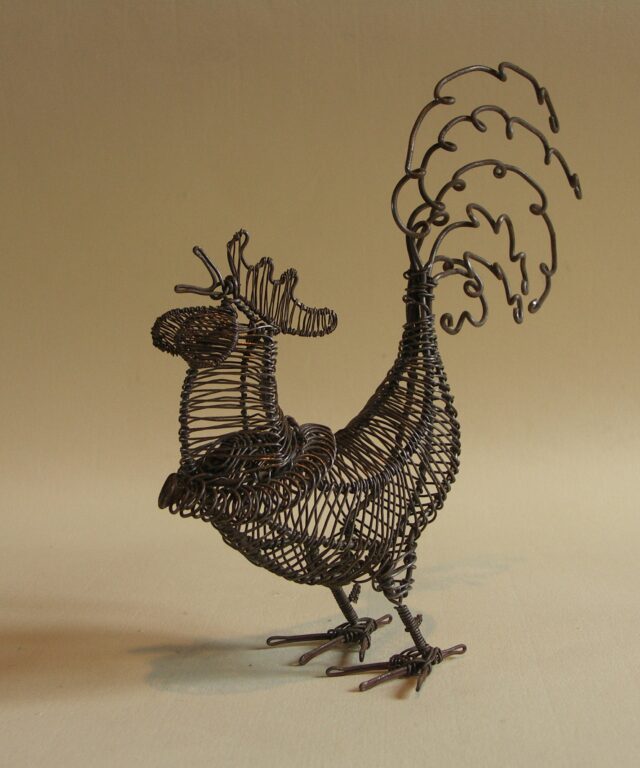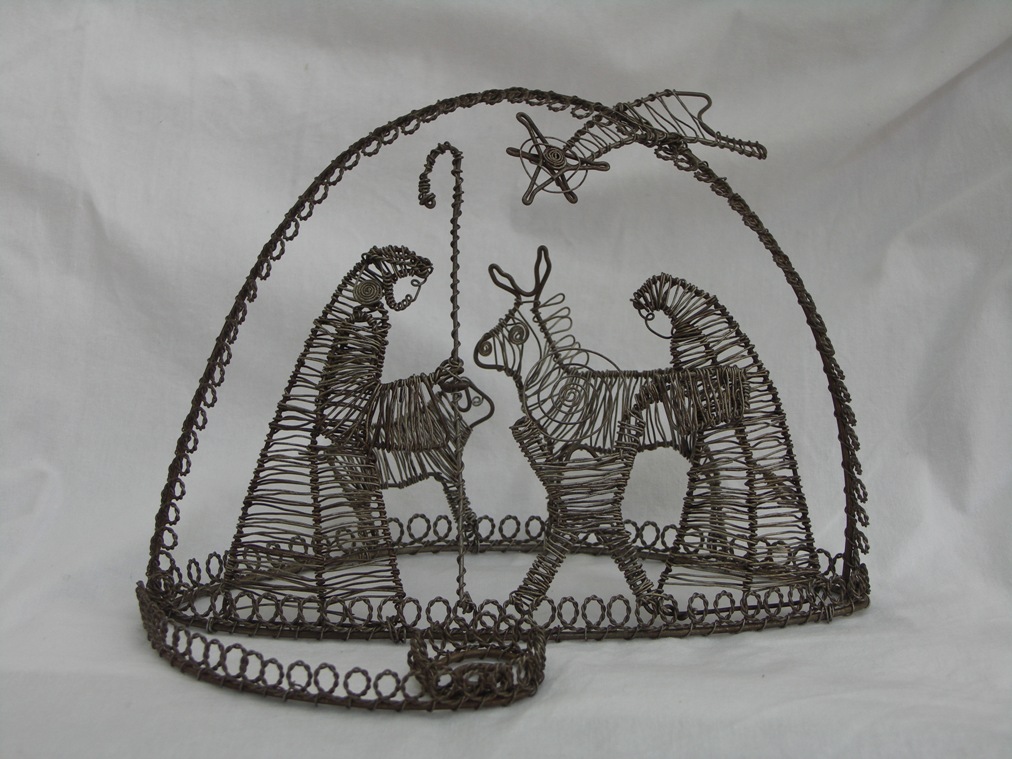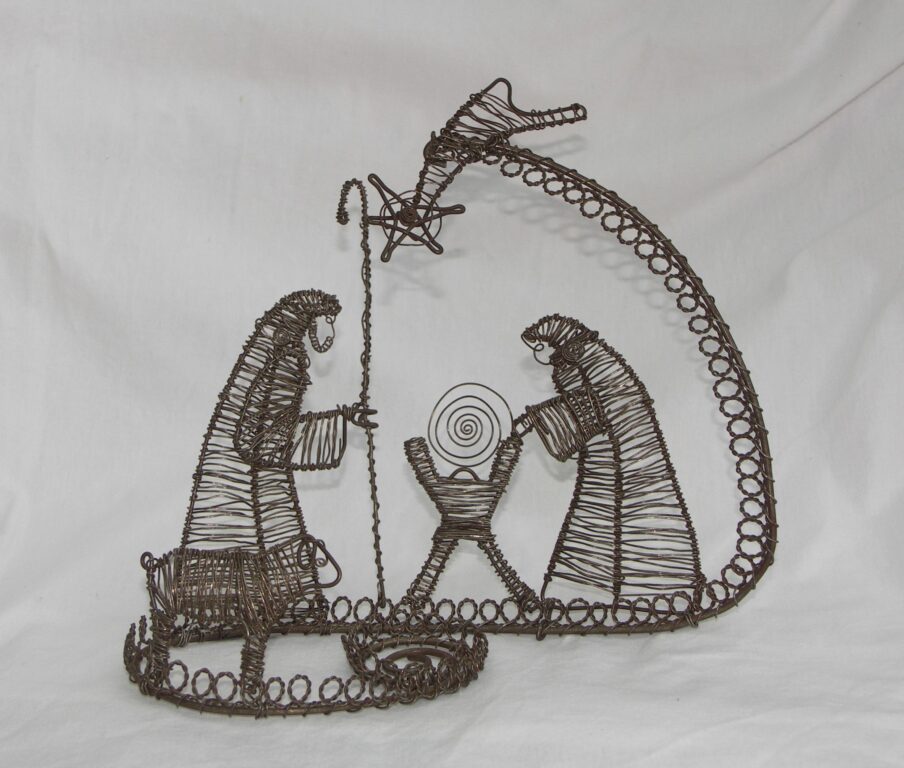The original wire craft focused almost exclusively on practical use in its products, and it was first used in the field of artistic creation in the years 1941–1942 to create unique wire sculptures on the occasion of the establishment of the museum in Zilina at the initiative of the wire craft organizer Karol Gulej. Although it enjoyed great success among...
The original wire craft focused almost exclusively on practical use in its products, and it was first used in the field of artistic creation in the years 1941–1942 to create unique wire sculptures on the occasion of the establishment of the museum in Zilina at the initiative of the wire craft organizer Karol Gulej. Although it enjoyed great success among visitors, in the following years wire crafting returned to a more utilitarian level. Perhaps because not many people can sense the artistic potential of this material.
Emanuel Hodál, however, was one of those who knew. Wire became his passion, he understood it and created remarkable sculptures from it. He did not have ties to the wire craft region, but he had a natural artistic talent, and despite not being able to attend an art school, he found solace in painting pictures and sculpting wood and stone alongside various jobs he held. Towards the end of the 1990s, a chance mention of wire craft led him to wire. The material appealed to him with its character and unusual properties. He quickly grasped the variability of forms and the expressive power of spatial lines that wire offers. The pliability and ease with which the metal fibers submitted to his will captivated him, and he felt the seemingly infinite possibilities of working with them as a constant creative challenge.
He found his initial inspiration in the first sculptures of old wire craft masters, as well as in old wire products in the collection of the Povazské Museum. They charmed him and provided valuable information on the original working methods. Although he often experimented in his art later on, he always worked with traditional wire craft techniques and rigorously adhered to the purity of the craft.
However, his greatest inspiration when he started creating came from the wire craft master Ladislav Mikulík from Senica, who helped him overcome initial technical difficulties in constructing the sculptures and infected him with his enthusiasm for wire craft. Emanuel Hodál became consumed by wire sculpting. When creating, he would lose himself for hours, shaping his sculptures intuitively directly by hand, without preparatory sketches or templates. He had a developed sense of space, an extraordinary sense of proportions and composition, and a myriad of ideas. Even with larger figures, he did not use soldered or welded joints; he tied or intertwined all the components of the future sculpture. He favored a dense linear or spiraled weave that allowed him to depict details, using loops less often. Through varying the density of the weave, combining multiple wire thicknesses, as well as alternating the direction of the metal fibers or layering different structures upon each other, he achieved a sense of plasticity. He mostly created using traditional untreated steel wire. He liked its natural color, luster, patina, and was not bothered by rust. He rarely blackened or nickel-plated the wire.
In his creations, he was inspired by memories of childhood spent in nature, and he was particularly fond of sacred motifs, especially the story of the Nativity and the Crucifixion, as well as various interpretations of the nativity theme. He enjoyed depicting craftsmen and often returned to figures of roosters and horses. All his sculptures were portrayed in dynamic movement, as if frozen in time. They are characterized by an exceptional lightness of depiction, at times resembling a three-dimensional hatched drawing.
Throughout his life, he created hundreds of smaller sculptures and decorative objects and almost a hundred larger or life-sized wire figures. He showcased his art both domestically and abroad. In 2008, he was awarded the title of Master of Folk Artistic Production for preserving and developing original figurative wire crafting.
(Source: Hallonová, K .: Emanuel Hodál – wire sculptor. In: Craft, art, design. 10, 2009, no. 1, pp. 38-39)
